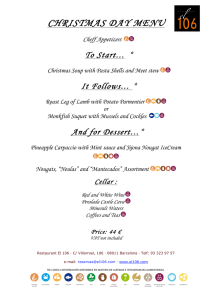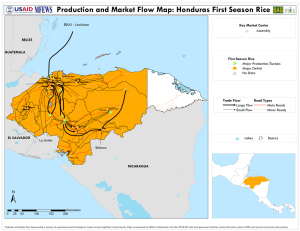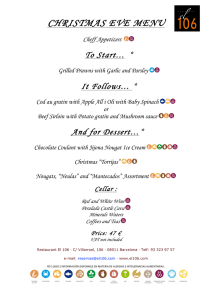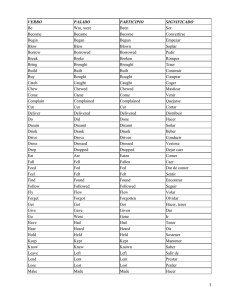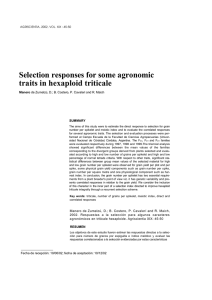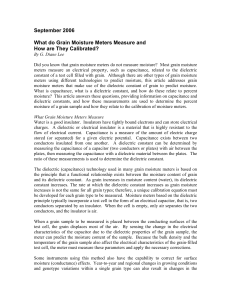Examen de Alineado el Patron de Comida CACFP con el Guia
Anuncio
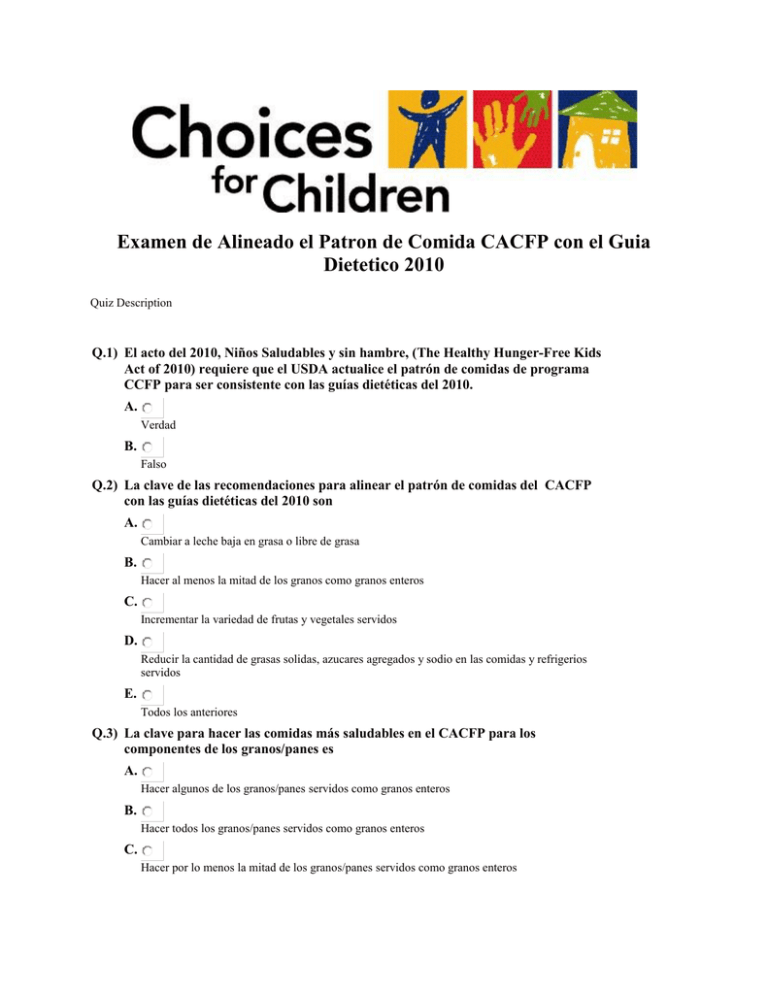
Examen de Alineado el Patron de Comida CACFP con el Guia Dietetico 2010 Quiz Description Q.1) El acto del 2010, Niños Saludables y sin hambre, (The Healthy Hunger-Free Kids Act of 2010) requiere que el USDA actualice el patrón de comidas de programa CCFP para ser consistente con las guías dietéticas del 2010. A. Verdad B. Falso Q.2) La clave de las recomendaciones para alinear el patrón de comidas del CACFP con las guías dietéticas del 2010 son A. Cambiar a leche baja en grasa o libre de grasa B. Hacer al menos la mitad de los granos como granos enteros C. Incrementar la variedad de frutas y vegetales servidos D. Reducir la cantidad de grasas solidas, azucares agregados y sodio en las comidas y refrigerios servidos E. Todos los anteriores Q.3) La clave para hacer las comidas más saludables en el CACFP para los componentes de los granos/panes es A. Hacer algunos de los granos/panes servidos como granos enteros B. Hacer todos los granos/panes servidos como granos enteros C. Hacer por lo menos la mitad de los granos/panes servidos como granos enteros D. Hacer la mitad de los granos/panes servidos como granos enteros. Q.4) Para ser considerado en el CACFP como grano/ panes enteros, estos deben ser de grano entero o enriquecidos, hechos de harina de grano entero o enriquecida. A. Verdad B. Falso Q.5) Productos que están hechos de grano entero o harina enriquecida son buena fuente de: A. Vitaminas del complejo B y hierro B. vVitaminas del complejo B y itamina C C. Calcio y hierro D. Calcio y Vitaminas del complejo B Q.6) Enriched products are those in which vitamins and/or minerals have been added to replace what was lost during processing (ie, iron, B vitamins in bread). A. True B. False Q.7) Refined grains contain the bran, the germ and the endosperm of the grain kernel. A. True B. False Q.8) Color is an indication of whole grain. A. True B. False Q.9) Check which grain products are whole grain A. brown rice B. whole wheat flour C. enriched white rice D. oatmeal E. grits F. cracked wheat (bulgur) G. wheat flour Q.10) Whole grain products are a good source of fiber A. True B. False Q.11) The best way to determine of a product is a whole grain one is to look for whole grain or whole grain flour as the first ingredient in the ingredient list. A. True B. False Q.12) What are some ways to incorporate more whole grains into your menu? A. mixing half white rice with half brown rice B. substituting whole wheat flour for white flour in recipes C. serving oatmeal for breakfast D. making sandwiches with whole white wheat bread E. all of the above Q.13) A key recommendation to make meals healthier for the vegetable component of the CACFP is to A. increase the amount of beans and peas served B. increase the variety of vegetables served C. increase the amount of white potatoes served D. increase the amount of dark green vegetables served Q.14) In the CACFP, dried beans and peas may be counted as a meat alternate or as a vegetable component and can be counted as both in the same meal. A. True B. False Q.15) Match the vegetable with the vegetable subgroup to which it belongs Choice A broccoli sweet Match red and orange 1 vegetables dried beans & B potatoes 2 peas C green peas 3 vegetables D green beans 4 vegetables other starchy dark green E kidney beans 5 vegetables Q.16) _________________________is important for proper bowel function, helps prevent constipation and may help reduce cholesterol and lower the risk of heart disease. A. Fiber B. Vitamin C C. Vitamin A Q.17) _______________________is important for the formation of collagen, helps heal cuts and wounds and keeps gums healthy and aids in the absorption of iron. A. Fiber B. Vitamin C C. Vitamin A Q.18) ____________________is important for the formation and maintenance of healthy eyes, skin, hair and mucous membranes and helps promote healthy vision and protect against infection. A. Fiber B. Vitamin C C. Vitamin A Q.19) What are some ways you can incorporate the vegetable subgroups into your meals? A. serving soups, salads, stews that include different kinds of vegetables B. add extra vegetables to sandwiches/wraps C. serving kabobs or a stir fry with lots of vegetables D. purchasing fresh vegetables in season at the farmers market E. all of the above Q.20) How can you make the following lunch menu healthier: teriyaki chicken, green beans, apple slices, white rice, milk? A. serving broccoli instead of green beans B. serving cantaloupe slices instead of apple slices C. serving brown rice instead of white rice D. all of the above Q.21) Reading the Nutrition Facts label and ingredients list helps to identify foods that may be high in solid fats, added sugars and sodium. A. True B. False Q.22) a %DV (Percent Daily Value) on the Nutrition facts label of 5% is considered low for that nutrient and a % DV of 20% is considered high A. True B. False Q.23) Which of the following fats are considered unhealthy fats (high in saturated fat/trans fat/cholesterol): A. butter B. safflower oil C. olive oil D. hydrogenated palm oil E. shortening Q.24) Low sugar cereals are those that have no more than A. 8 grams of sugar B. 6 grams of sugar C. 10 grams of sugar Q.25) Excess sodium in the diet can lead to A. high blood pressure B. heart disease/stroke C. kidney damage D. all of the above
